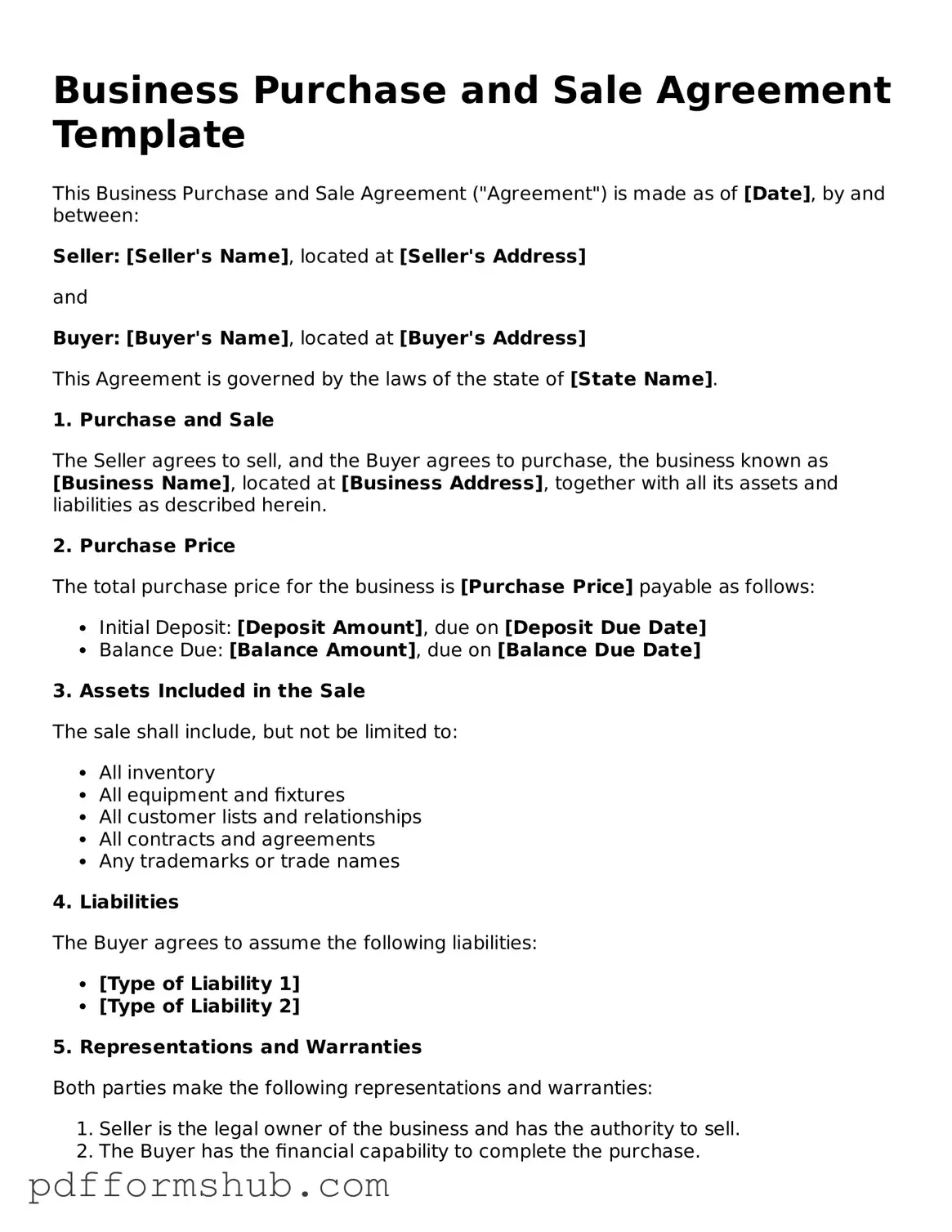Valid Business Purchase and Sale Agreement Form
A Business Purchase and Sale Agreement is a legal document that outlines the terms and conditions under which a business will be sold or purchased. This form serves to protect both the buyer and the seller by clearly detailing the responsibilities and expectations of each party involved in the transaction. To get started on your agreement, fill out the form by clicking the button below.
Customize Form
